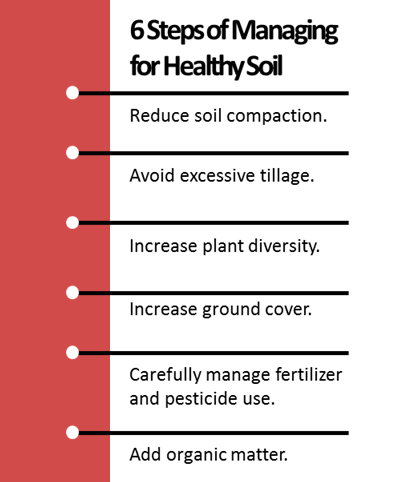Why Aerate with Genesis Tillage?
Aerate To Relieve Compaction For Healthier Soil Conditions and More Abundant Crops.

The GenTill system works to increase the soil organic matter of your field. As soil organic matter increases, soil aggregation is improved because soil particles are glued together into larger, more stable elements. This increase in overall aggregation and in the stability of the aggregates, has the following beneficial effects:
• Resistance of soil dispersion
• Less susceptibility to compaction
• Improved soil aeration
• Better soil drainage
• Improved infiltration
• Less susceptibility to soil erosion
• Earlier plant emergence

Genesis Tillage™, Inc. Results
Introduction
It always seems that when the subject of tillage comes up, there is someone who proudly boasts of having no-tilled for a lot of years. You can probably think of someone who can make such a claim. You might even be that person.
In over nearly twenty years of observing tillage practices on farms it has become obvious that using a correctly constructed and operated soil aerator has wrought significant and fundamental changes to the soil environment. Unfortunately, very few machines have been built to perform in the truest rendering of the invention. Nonetheless, there are measurable differences, which are known to contribute to more topsoil retention and more profitable crop production. Machines properly equipped have been properly operating on farms for sufficient periods of time for measurements to be taken.
Evidence
Growth of organic matter content:
In as little as four years of consistent annual aeration, the top three inches of soil on the Charles Sullivan farm in Lewis County, New York State, increase in organic by over fifty percent. Crops included alfalfa, corn for grain and corn for silage production. In some fields it included use of wheat as a winter cover. In all fields dairy cattle manure was applied in the same rates and manner as had been previously. Soil samples were taken in profiles from surface to three inches and from three to seven inches.
Available Phosphorus
Soil test show consistent improvement in level of P1 phosphorus by as much as 25%. Combined readings of Bray 1 and 2 showed increases of up to 35%.
Magnesium Availability
The Sullivan farm historically called for addition of magnesium limestone to correct recurring magnesium depressions. Levels as low as 5% base saturation were common when work began on this farm. Within four years of converting tillage practices the magnesium levels had increased on selected fields to the point that dolomite lime would not be selected. Many of these fields had never received magnesium from limestone.
Potash Soil Levels
Normally the annual usage of potash was about 20 tons on the Sullivan Farm. Within four years the usage was down to less than half of that amount.
Calcium Levels Decline
Normally a high pH farm with calcium levels running up into the 80% base saturation range, began to show test readings down in the low to mid 70’s and some fields were actually requiring addition of calcium limestone. The Stinson farm in Jefferson County New York, saw a field which had been in continuous corn silage production for over thirty years change from needing two tons of dolomite lime to requiring two tons of calcium limestone in three years. Use of dairy cattle manure on alfalfa combined with soil aeration eliminated the need for broadcast application of potash fertilizers. The soil amendment needed on Stinson was Boron, which was added through the manure application.
Yields
The Sullivan farm corn for grain yield increased from 125-150 bu./acre range to 175 bu./acre. Stinson switched from 30” row to 15” row corn for silage and observed yields as high as 32 ton/acre with above average feeding value results.
Alfalfa production practices included using less seed per acre in establishment, down to 10 and 12 pounds per acre instead of 20, increased longevity through reduced heaving losses, and reduced weed pressure from dandelions. Rates of production were hard to determine but they certainly didn’t decline and observation clearly showed an increase in the number of vegetative shoots per crown resulted from managing aeration and the flowering of the crop.
Longevity of alfalfa stands has changed on the Paul Mason farm from 3 years as about the end of the good times to no significant decline in the life of the stand in the rotation, which is six years. Mason’s soils are considered poorly adapted to alfalfa and more suitable for clover, and trefoil mixed hay stands. Internal drainage is so poor that tile is not recommended and surface drainage and land-leveling are FSA supported drainage practices.
In Summary
The tine type soil aerator in the original rendering of the patent largely disappeared from the commercial row-crop and dairy farm scene in 1988. The kind and magnitude of results seen on these farms was documented as a result of using a tool, which is being re-introduced by Genesis Tillage™, Inc., which is based in Hope, Indiana. For more information on how to purchase a new Genesis Tillage™, Inc. Gen-Till™ II machine, alter an existing soil aerator, or build your own tool from components built by Genesis Tillage™, Inc., call toll free 866-773-2730.

